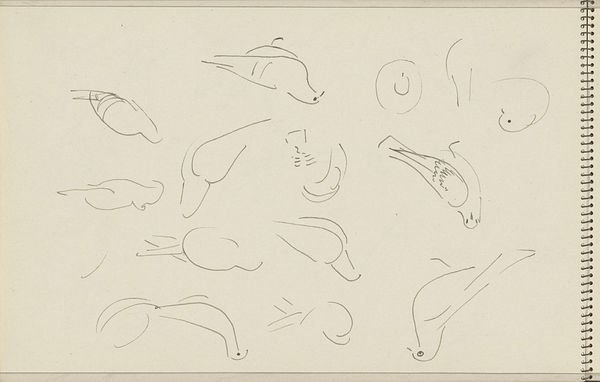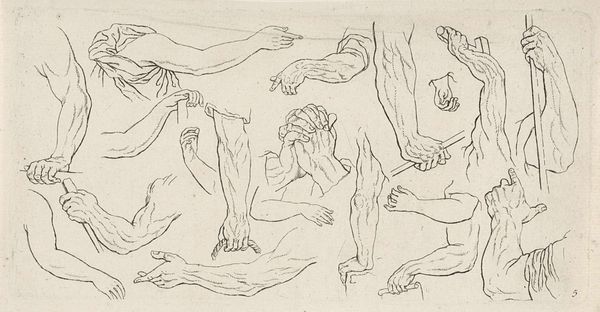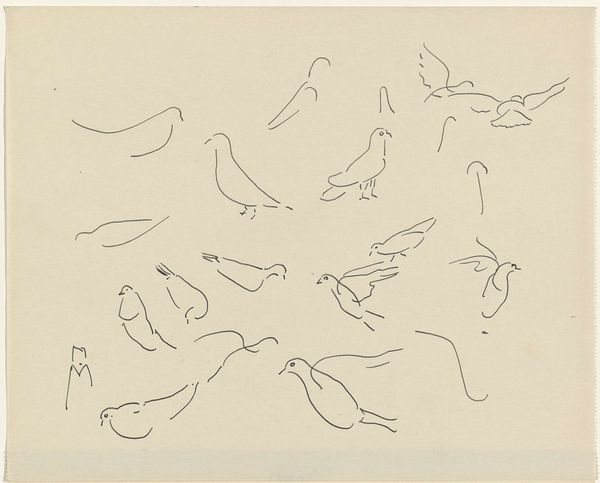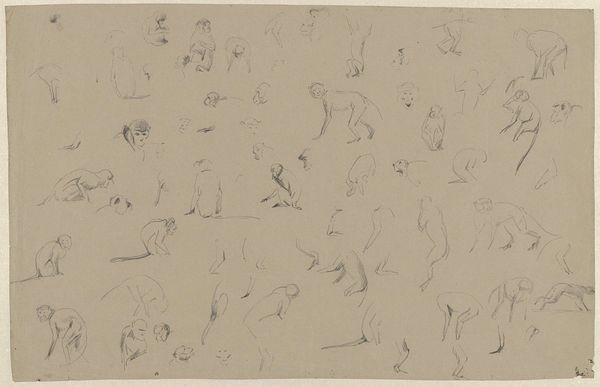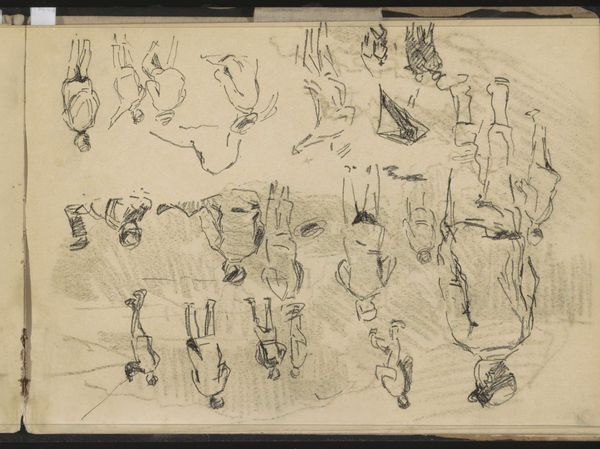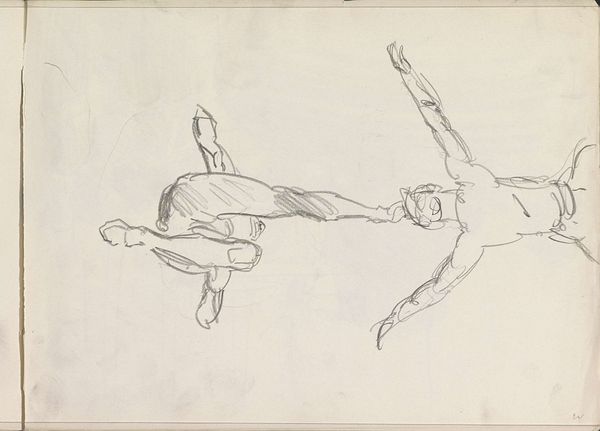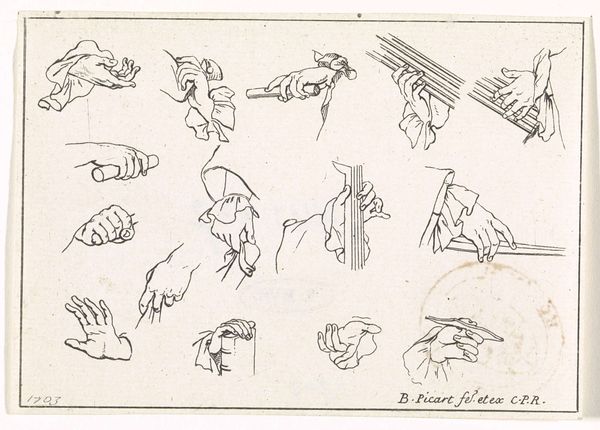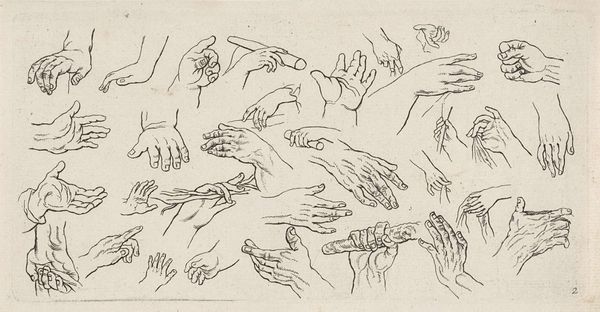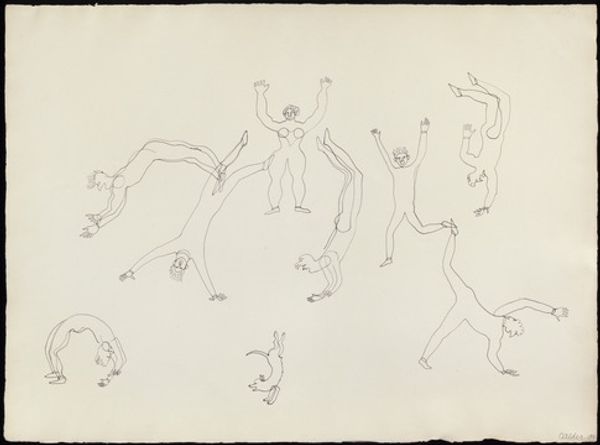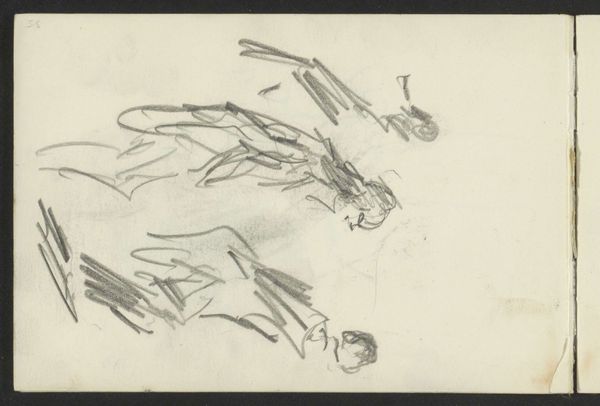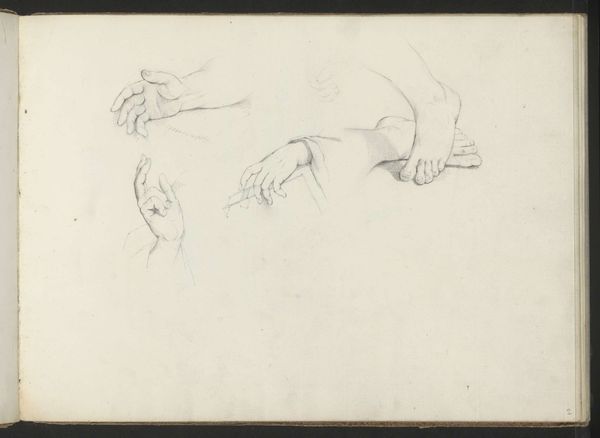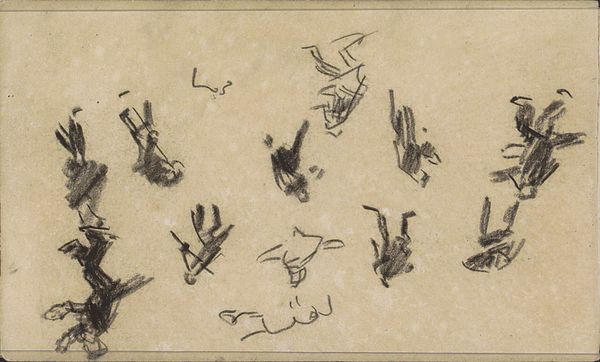
drawing, ink, pen
#
drawing
#
baroque
#
pen illustration
#
pen sketch
#
figuration
#
ink
#
pen
Dimensions: height 77 mm, width 116 mm
Copyright: Rijks Museum: Open Domain
Curator: Studying Bernard Picart's 1703 ink drawing, "Study with Various Positions of Arms and Hands," it is fascinating how much attention is paid to the tools and accessories in relation to the body. What captures your attention initially about this drawing? Editor: It's interesting to see so many hands and arms depicted this way, almost like a catalogue of gestures. I'm struck by the different objects being held—a quill, a fan, a playing card—and the varying levels of detail given to each hand. What story can be told from the objects held in these hands? Curator: Think about the social and economic context. In 1703, what do these objects signify? The quill implies literacy, the ability to participate in knowledge production and dissemination, indicating that its user had leisure time. The fan? A signifier of status and part of the ritual of courtship, deployed with particular skills, particularly by women in this period. Even the paper the ink adheres to, the methods and cost of preparing the pigment. This level of detail given to even the textiles communicates social stratification. Who had access to fine fabrics? How readily were these goods consumed? This study is not only about form, it’s about a material world brought to life via labor and production. Don’t you agree? Editor: Yes, seeing it that way makes me think about who had access to these skills and objects, and who didn’t. It challenges the idea that art from this period was just about aesthetics or individual expression. Were these sketches of Picart’s assistants’ arms and hands or studies taken from portraits, or did they require commissioning a live model? Curator: Precisely. Consider the labor involved – not just the artist's labor, but the labor involved in acquiring these luxury materials and specialized skills in writing or courting. These hands aren’t generic but tell very specific stories of access, skill and perhaps exploitation of those that worked to produce them. The production becomes central to its meaning and helps contextualize a moment in history. Editor: It's eye-opening to see how even a study of arms and hands can reveal so much about the material conditions and social dynamics of the time. I never thought about a drawing in this way before, it feels more like examining historical objects through art. Curator: Absolutely. It transforms how we perceive not just the artwork but also the world it came from, enriching our understanding of art's role within broader cultural systems.
Comments
No comments
Be the first to comment and join the conversation on the ultimate creative platform.
